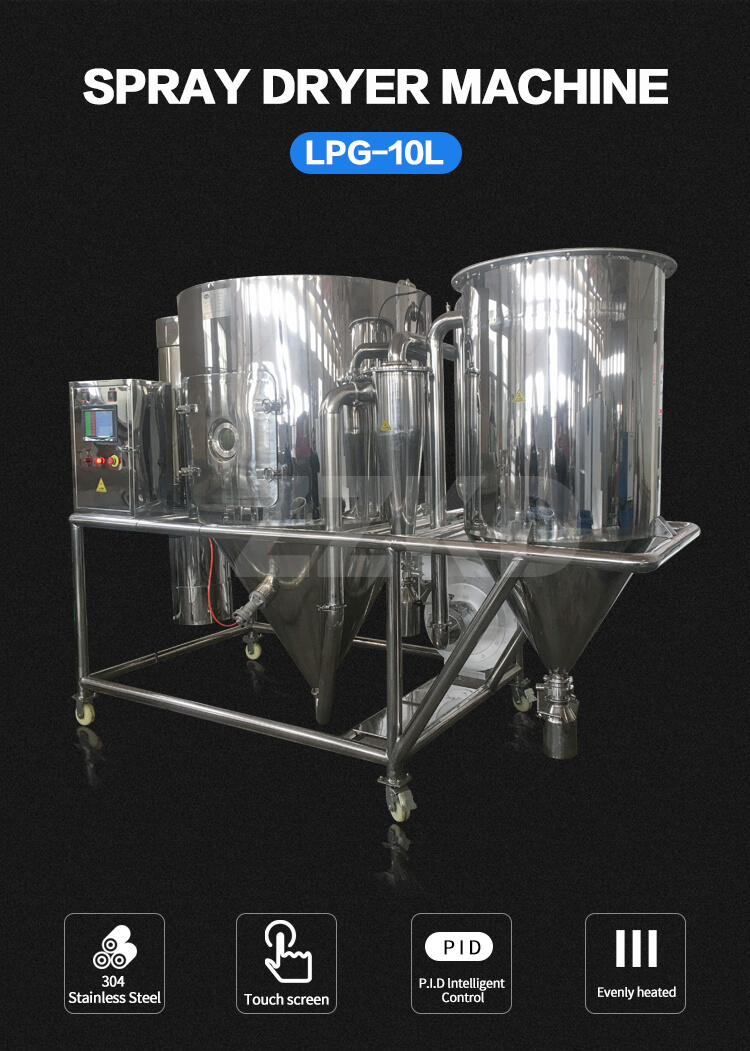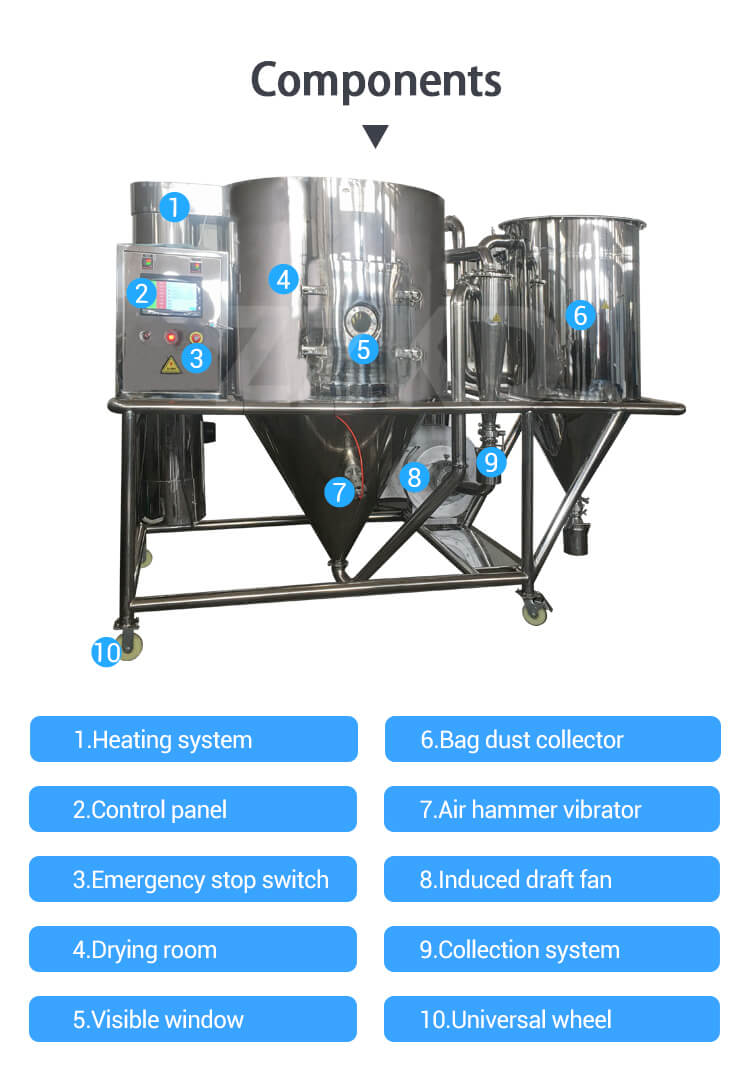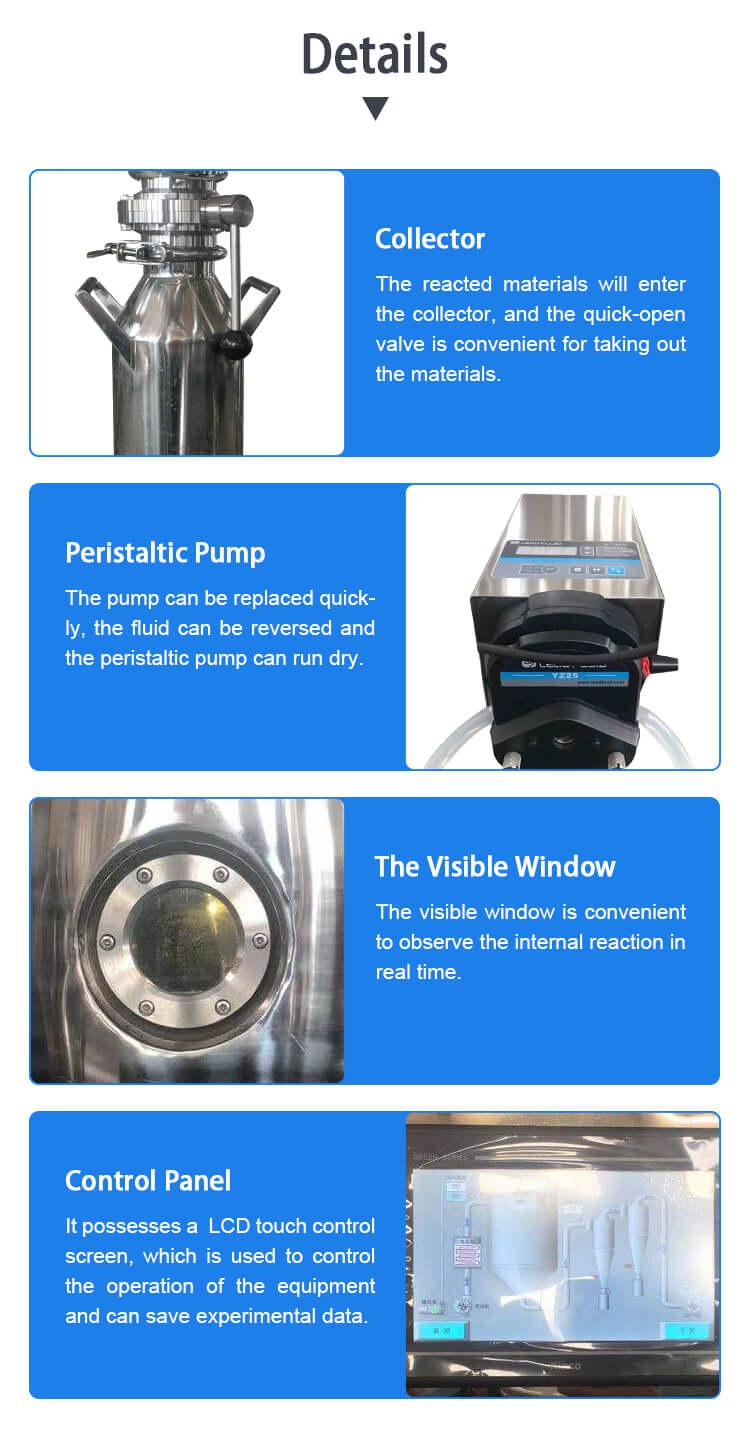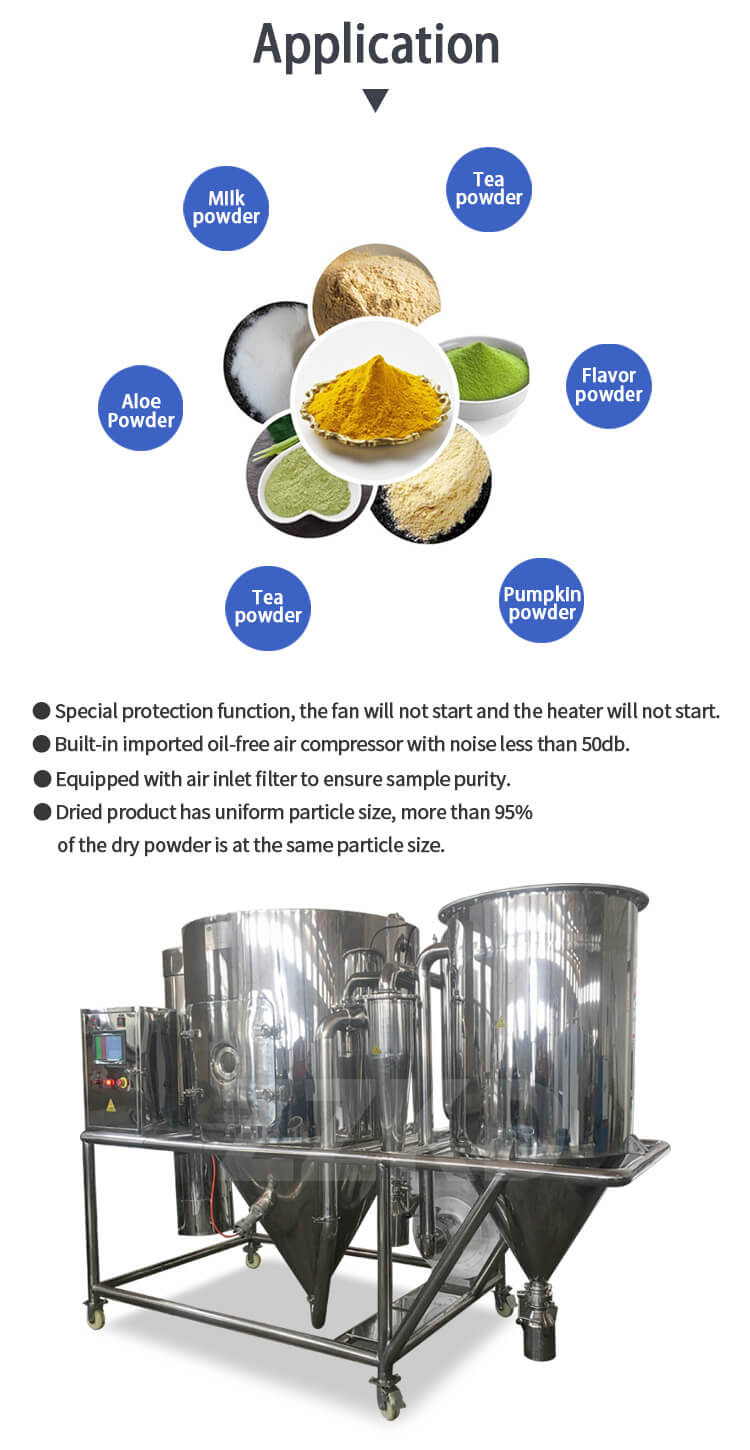Commercial Spray Dryer
A spray dryer is a specialized piece of equipment used to produce powder products from liquids or slurries. It is a versatile and cost-effective device used in many industries including food, pharmaceuticals, chemicals and biotechnology. In this article, Jordan will focus on commercial spray dryer price , their design, operation and application.

What is a spray dryer?
A spray dryer is a device that converts a liquid or slurry into a dry powder through a controlled process of atomization, drying and separation. The liquid is atomized into a mist of small droplets using a nozzle or atomizer. The droplets are then quickly dried in a hot air stream, and the dry powder is separated from the exhaust air using cyclones, bag filters or other equipment.
The spray drying process has several advantages over other drying techniques. It produces a uniform and consistent powder with a narrow particle size distribution. It can also handle a wide range of raw materials including heat sensitive materials, viscous liquids and materials with high solids content. Moreover, it enables high yield and efficient use of energy and resources.
Commercial Spray Dryer Design:
Commercial spray dryers typically consist of the following components:
Atomizer or Nozzle: This component is responsible for breaking up the liquid feed into small droplets. There are several types of atomizers, including pressure nozzles, rotary atomizers, and two-fluid atomizers. Each type has its advantages and disadvantages, depending on the characteristics of the liquid feed and the desired product characteristics.
Drying Chamber: This component is where the atomized droplets are exposed to hot air and dried. Drying chambers can be of co-current, counter-current or mixed-flow design, depending on product requirements.
Air Handling System: This component provides hot air for drying the droplets. The air must be filtered, heated and humidified before entering the drying room. The temperature and humidity of the air can be adjusted to control the drying speed and product quality.
Powder Collection System: This component is where the dry powder is separated from the exhaust gas. The most common type of powder collection system is the cyclone, which uses centrifugal force to separate the powder from the air. Other types of powder collection systems include bag filters, electrostatic precipitators, and scrubbers.
Control System: This component is responsible for controlling and monitoring process parameters such as feed rate, air temperature and powder moisture content. It also provides safety features and alarms to prevent accidents and protect equipment.

Commercial Spray Dryer Operation:
The operation of a commercial spray dryer involves several steps, including:
1. Feed preparation: Liquid feed is prepared by mixing raw materials and adding any necessary additives or solvents. Feed must be uniform and free of lumps or foreign particles to ensure product consistency.
2. Atomization: The liquid feed is introduced into an atomizer or nozzle where it is converted into small droplets. Droplet size and distribution can be controlled by adjusting atomizer parameters such as pressure, flow rate, and nozzle size.
3. Drying: The droplets are introduced into a drying chamber where they are exposed to hot air. Air temperature and humidity are adjusted to achieve the desired drying rate and product characteristics. Drying times can vary from seconds to minutes, depending on product requirements.
4. Powder collection: use cyclone separator or other powder collection system to separate dry powder from exhaust gas. The powder is then discharged into a hopper or other container for further processing or packaging.
5. Cleaning and Maintenance: After each batch, the spray dryer must be thoroughly cleaned to prevent contamination or product residue buildup. This involves disassembling the nebulizer, drying chamber and powder collection system and cleaning them with water or solvent. Regular maintenance and inspections are also necessary to ensure the equipment is functioning properly and to detect any potential problems or wear.

Commercial Spray Dryer Applications:
The spray drying process is used in many industries to produce a wide range of powder products including:
1. Food: Spray drying is used to produce milk powder, coffee, tea, spices, flavors and other food ingredients. It can also be used to encapsulate oils, vitamins, and other sensitive ingredients to prevent them from degrading or oxidizing.
2. Pharmaceuticals: Spray drying is used to produce powdered drugs, vaccines and excipients for oral, inhalation and parenteral administration. It can also be used to improve the solubility, bioavailability and stability of drugs.
3. Chemicals: Spray drying is used to produce powdered detergents, polymers, catalysts and other chemical products. It can also be used to recover and recycle solvents or other materials from waste streams.
4. Biotechnology: Spray drying is used to produce powdered enzymes, probiotics and other biological products. It can also be used to stabilize and preserve biological products such as proteins and vaccines.

A commercial spray dryer is a versatile and essential piece of equipment used in many industries to produce high quality powder products. Its design and operation are optimized for efficient and cost-effective drying of liquid or slurry raw materials. The spray drying process offers several advantages over other drying techniques, such as the ability to handle a wide range of raw materials, achieve narrow particle size distributions, and protect sensitive components. The use of spray drying is expected to increase in the future as new applications and innovations emerge across various industries.


